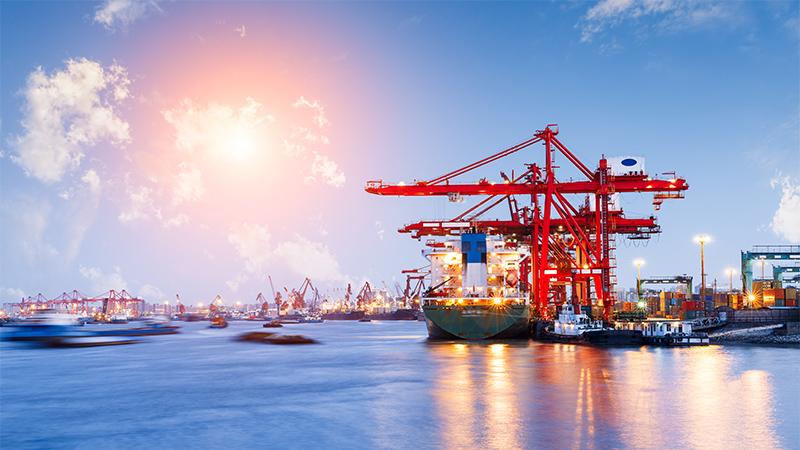Safe Port Operations with Maritime Observation Systems
Accurate, real-time local weather and sea-state information provided by modern maritime weather monitoring systems reduces the uncertainty and risks associated with making operational decisions, in and around the port.
Weather monitoring systems, such as those offered by Vaisala, provide local real-time data collection, intuitive display software, data storage and management. They also facilitate access to real-time and historical weather information for all necessary parties, from ships’ captains and tug masters to crane operators and mooring teams.
Confident Operational Decision-Making
What to monitor, where, and how will depend on the characteristics of the port in question. Reliable and accurate measurement of visibility, wind direction and wind speed are critical to ensuring navigational safety, especially where large tankers are operating. In addition, oceanographic measurements such as current, wave height, sea level, and salinity can all be part of a modern system supporting complex port environments.
Confident operational decision making is enabled by utilizing reliable meteorological data. The heart of any system is the weather station, which collects, processes, and communicates the information from the connected measurement equipment.
The Vaisala AWS430 Maritime Observation System provides a wide range of meteorological and statistical calculation options, integrating all essential weather measurements into one single system and data stream. For oil and gas operations, and liquid natural gas (LNG) transportation in particular, severe weather – especially lightning – can present a significant safety risk when vessels are in port loading or unloading their cargo. The danger posed by lightning was brought into sharp focus in 2011, when the tanker Bunga Alpinia was struck during the loading of methanol at a terminal in the South China Sea. The resulting explosion led to five fatalities, a significant environmental threat to the surrounding area, and the almost total destruction of the vessel. A reliable lightning detection system would have provided advance warning of the potential danger, allowing decision-makers to halt sensitive operations prior to lightning threatening the safety of the operation.

Prevention Drives Safety, Readiness Attracts Business
With a modern weather monitoring system in place, weather-critical operations can be carried out when conditions are optimal and halted when there is a safety risk. Lightning poses an explosion risk, and approaching storms and high winds can interfere with crane operations, preventing loading and unloading. Accurate weather information and forecasting not only ensure the safest possible operation portside they also enhance the attractiveness of the terminal to potential customers. In an increasingly competitive market, a comprehensive weather monitoring system can give a port that extra edge.
While real-time weather information is not critical for all harbor operations– passenger ferries and hard-cargo vessels, for example, can often operate in even the most demanding conditions – it is a critical resource in the case of emergency situations, in terms of determining liability and processing insurance claims.
Value Through Partnering
One of the major challenges faced by port operators when deciding to implement weather observation systems is how to gain a better understanding of the weather in relation to their specific environment. How does it affect operations and, therefore, what should be measured, where, and how? This is where close collaboration with a knowledgeable partner is extremely valuable, particularly when it comes to determining the optimal location for sensor equipment and predicting the behavior of the potential parameters to be measured. For oil and gas operations, and again LNG in particular, a supplier with an in-depth knowledge of electrical storm behavior and detection, and the capability to support hazardous locations or explosive atmospheres is critical to ensuring safety and enabling effective planning of operations.
Services such as the Vaisala Global Lightning Dataset GLD360 can be combined with local lightning sensors, displays, and alarms for on-site lightning detection. A comprehensive system like this will provide early warning and tracking of thunderstorm movement. For port operators, a modern and accurate maritime observation system provides a crystal-clear picture of the conditions out on the water and sky – whatever the weather.

The article was originally published in Vaisala News 192/2014.


Add new comment